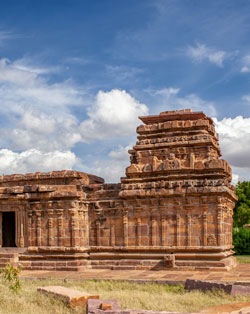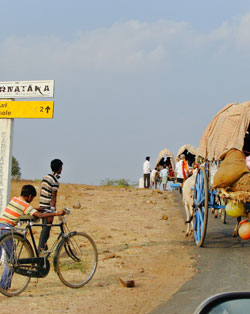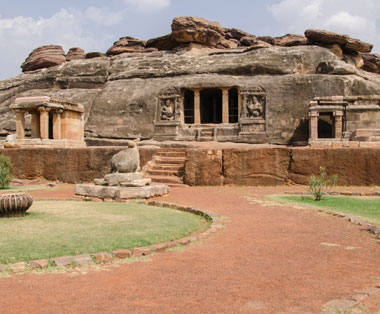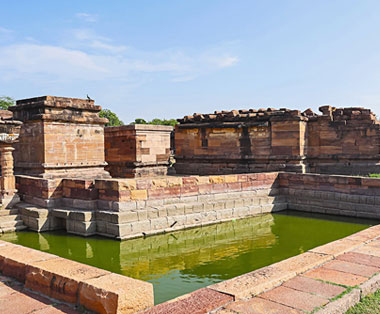Aihole
In the whole Karnataka varied invaders, dynasties, as well as conquerors, have come and gone leaving behind their imprint. This is more imminently seen at Aihole, in Northern Karnataka. Aihole is also known as earlier capital of Chalukyas Dynasty. It is one of the glorious parts of India and a trip to this place that exhibits the medieval Indian art and architecture will make you aware of the great Indian heritage. It is most popularly known as " Cradle of Indian Architecture ", and it is because of a large number of temples present all over the village. Those people, who are fond of exploring the rich heritage and the architectural brilliance, must-visit Aihole. The village holds the yesteryear charm very nicely. Some of the temples date back to the 5th and 6th century. All the temples are also split into varied groups by historians. Quarry and further investigation of the history of Aihole are still going on and a large number of tourist are visiting this place to enjoy the serenity and the spiritual atmosphere every year.
Aihole is located on the riverbank of Malaprabha. RavanaPhadi, the cave temple stands backed against a rocky hill, from which Aihole has been carved. The place has a very dry tropical atmosphere and the primary seasons here are summer and winter. In summer, it is very hot and the temperature remains very high for which it is not at all feasible to visit the sightseeing. The summer lasts from April to early July. Then the rain starts and continues till September. This is also not an ideal time to visit. The time between October to March is best to visit Aihole, which is the wintertime and the weather is very pleasant. The temperature remains between 18-25 degree C. It helps the tourist to explore the place very easily.



The main places around to visit.
- As the city is gifted with various magnificently crafted worship place, therefore it was once the centre of experiments by architectures.
- The temples are carved with beautiful sculptures and the most beautiful one is the dancing Shiva who looks like trembling with motion. Then there is another image of Mahisuramardhini. This makes the caves and temples worth a visit.
- The main temple complex is little distance away from where there are a hundred shrines, both large and small. It is under the protection of the Archaeological Survey sof India.
- Durg Temple is one of the decorated monuments present in Aihole and is famous for imitating the Buddhist rock-cut chaitya hall.
- The Lad Khan temple and although it is not believed to be a temple it is a village meeting place that resembles thatched hall. It is believed that the architects of Chalukyas made these shrines while attempting to create some structural temples for Hindus to worship.
- Megudi temple, Ravanphadi cave, Hucchimalli temple, Suryanarayan temple, Gowda temple and many more places to visit.
So, with so many beautiful things to see you should not miss visiting this place! You mustinclude this place in your Hampi itinerary.


What are the main attractions in Aihole?
Aihole boasts over 125 temples with a variety of architectural styles. Key attractions include:
- Durga Temple: Known for its unique elliptical plan and intricate carvings.
- Meguti Jain Temple: Famous for its early Chalukyan architecture and inscriptions.
- Ravanaphadi Cave Temple: A cave temple with notable rock-cut sculptures.
- Ravanaphadi Cave Temple: A cave temple with notable rock-cut sculptures.
- Huchiappaswami Temple: Distinguished by its elaborate carvings and sculpture work.
What is the best time to visit Aihole?
The ideal time to visit Aihole is between October and March when the weather is pleasant and cool. Avoid the monsoon season (June to September) due to heavy rainfall, which might make travel difficult.
How can I reach Aihole?
Aihole is well-connected by road and is about 500 kilometers from Bangalore. The nearest major city is Bagalkot, which is around 34 kilometers away. You can reach Aihole by:
- Train: The closest railway station is Bagalkot.
- Bus: There are regular buses from major cities in Karnataka to Bagalkot, from where you can hire a taxi or take a local bus.
- Car: Driving from Bangalore or other nearby cities is also a convenient option.
Are there any accommodations available in Aihole?
Accommodation options in Aihole are limited, but there are a few budget hotels and guesthouses in and around the village. For more comfortable stays, you might consider lodging in Bagalkot or Hubli, which have a wider range of hotels.
Are there any entry fees or guidelines for visitors?
Entry to most of the temples in Aihole is free, but donations are often appreciated. Some sites may have specific visiting hours or guidelines, so it’s best to check locally for the most current information.
Is it possible to hire a guide in Aihole?
Yes, local guides are available and can provide insightful information about the history and significance of the temples and structures. Hiring a guide can enhance your visit by offering detailed explanations and context.
What other places can I visit near Aihole?
Nearby attractions include:
- Badami: Famous for its cave temples and fortifications.
- Pattadakal: Known for its group of temples with a blend of architectural styles.
- Mahakuta: Renowned for its ancient temples and scenic surroundings.
Are there any dining options available in Aihole?
Dining options in Aihole are limited. Most visitors prefer to eat in Bagalkot or Hubli, where you can find a variety of restaurants offering local and regional cuisine.
What are some nearby attractions?
- Hampi: A UNESCO World Heritage Site known for its ancient ruins and historical significance, located about 12 kilometers from the dam.
- Virupaksha Temple: A major temple dedicated to Lord Shiva, located in Hampi.
- Hospet: The town itself has various temples and local attractions.
Who manages the Tungabhadra Dam?
The Tungabhadra Dam is managed by the Tungabhadra Board, a joint board of the states of Karnataka and Andhra Pradesh, responsible for the regulation and maintenance of the dam and its reservoir.
